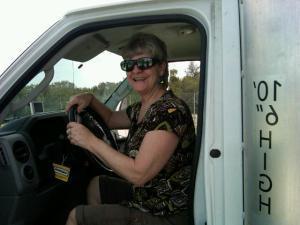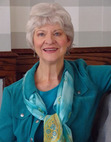Heidi M. Thomas's Blog, page 20
March 5, 2012
Travel Adventures with Penske Pair Part III
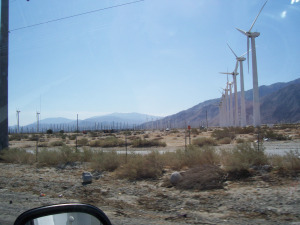 While driving dross-country, we saw huge wind farms along the freeway In CA, near Palm Springs, and in Texas near Pecos. I remember the windmills we had on the eastern Montana ranch when I was growing up, which pumped water for our cattle. Some people, such as the owners of the little country store nearby, also used the windmill to generate electricity. These were simple wooden apparati, running without motors. We saw some of the old-fashioned windmills in Texas too.
While driving dross-country, we saw huge wind farms along the freeway In CA, near Palm Springs, and in Texas near Pecos. I remember the windmills we had on the eastern Montana ranch when I was growing up, which pumped water for our cattle. Some people, such as the owners of the little country store nearby, also used the windmill to generate electricity. These were simple wooden apparati, running without motors. We saw some of the old-fashioned windmills in Texas too.
The largest of the modern day turbines stands 150 feet tall with blades half the length of a football field. Each can cost up to $300,000, requires average wind speeds of at least 13 mph and can produce 300 kilowatts – the amount of electricity used by a typical household in a month. This wind farm on the San Gorgonio Mountain Pass in the San Bernadino Mountains contains more than 4000 separate windmills and provides enough electricity to power Palm Springs and the entire Coachella Valley.
The Desert Sky Wind FarmIn Pecos County is a 160.5 megawatt station. This wind farm consists of 107 wind Turbines, each rated at 1.5 megawatts spread over a 15-square-mile area. San Antonio purchases the power produced.
My last report left off at San Antonio, probably my favorite city in Texas. The first time I visited was about 1990 when I went with the Sweet Adeline group from Missoula, MT for our national competition. The second time was with my DH and the the third was for a Women Writing the West conference. The countryside is lush and green, and approaching the area, we saw more cattle ranches. The city seems to be in better economic condition than other areas, as there is a lot of construction going on.
The weather from here for the next three days would be cloudy, rainy and cool. Where did that southern sunshine go?
 Next stop, Lake Charles, LA (actually the motel was in Sulphur, a former sulphur-mining town). We found a great coffee shop, Stellar Beans and took our coffee and breakfast to the beach along Lake Charles. It was windy, but pleasant enough (low 70s) to sit awhile and then walk on the sand.
Next stop, Lake Charles, LA (actually the motel was in Sulphur, a former sulphur-mining town). We found a great coffee shop, Stellar Beans and took our coffee and breakfast to the beach along Lake Charles. It was windy, but pleasant enough (low 70s) to sit awhile and then walk on the sand.
Check back for our visit to Magnolia Mound Plantation in Baton Rouge, LA.








March 3, 2012
Travels with Penske Pair Part II
 Las Cruces, NM is the second largest city in the state, with a population of 95,000, and is home to New Mexico State University. For thousands of years, the valley was inhabited by ancient Native Americans, the Mogollon. Las Cruces was incorporated as a town in 1907 and New Mexico became a state in 1912. We drove to the small "old town" bedroom community of Mesilla, where I visited Bowlin's Books and sold four of my books to the proprietor. This area is very windy and dusty and we've decided we don't want to move here.
Las Cruces, NM is the second largest city in the state, with a population of 95,000, and is home to New Mexico State University. For thousands of years, the valley was inhabited by ancient Native Americans, the Mogollon. Las Cruces was incorporated as a town in 1907 and New Mexico became a state in 1912. We drove to the small "old town" bedroom community of Mesilla, where I visited Bowlin's Books and sold four of my books to the proprietor. This area is very windy and dusty and we've decided we don't want to move here.
Continuing on I-10 east, we entered Texas, which would take us three days to cross. There are many things about Texas that remind me of Montana (the time is takes to cross it, for one, some of the terrain, the "big sky" with cloud shadows in the distance, and the friendliness of the people.) The countryside is brushy, plains desert, which must have been a challenge rounding up cattle for shipment in the old days (or even today, if that's still being done). We didn't see many cows in the area.
El Paso is a large, spread-out city, with lots of room to grow. (Reminded me of the old song "Out in this west Texas town of El Paso, I fell in love with a Mexican girl…:" I used to know all the verses!)
We spent the night in the small town of Van Horn, dining on a great ste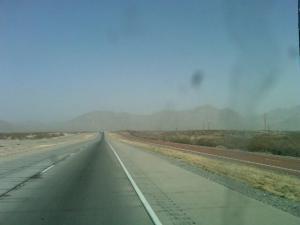 ak at the Cattle Company.
ak at the Cattle Company.
Ironically, the speed limit in most of Texas is 80 mph, however, driving a loaded truck, we are keeping to 65-70 mph to save gas. West Texas is miles and miles of nothing but miles and miles. I kept wondering about the early settlers, how they managed to travel through this country and why they decided to settle where they did. The picture above shows the long, straight highway and distant hills shrouded in dust. Our windshield needed washing and my sister-in-law commented, when I sent her the photo, it looked like the ghost of a tornado that must have picked up speed and gone on to Missouri and other states to wreak havoc. (It's just a streak on the windshield however.)
The next stop was in Fort Stockton Tx, where I'd searched on-line for a possible place to sell books and found the Gray Mule Saloon and Gifts. But when we arrived, the Ol' Gray Mule wasn't what she used to be, undergoing remodeling to become a wine-tasting shop. Having not found our favorite Starbucks that morning, we were delighted to see Anastasi's Pottery, Coffee Bar & Cafe right across the street. We purchased an excellent cup of brew and visited with Rhonda and Alfredo Ibarra. I mentioned I was an author, handed her my card, and Rhonda said she'd been looking for western-themed books to sell. Voila! Four more books sold!
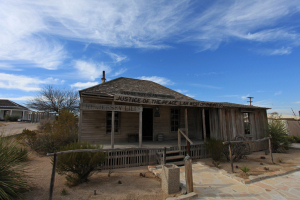 Movin' on down the road, we crossed the Pecos River, which reminded me of the saying "the only law West of the Pecos," referring to Judge Roy Bean, the "hangin' judge." He established the Jersey Lilly Saloon in Langtry, Tx, and it is the namesake of the saloon in Ingomar, MT, where my grandparents lived. Bean reportedly was infatuated with the actress Lilly Langtree, and named the establishment for her.
Movin' on down the road, we crossed the Pecos River, which reminded me of the saying "the only law West of the Pecos," referring to Judge Roy Bean, the "hangin' judge." He established the Jersey Lilly Saloon in Langtry, Tx, and it is the namesake of the saloon in Ingomar, MT, where my grandparents lived. Bean reportedly was infatuated with the actress Lilly Langtree, and named the establishment for her.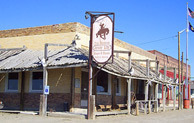 The top photo is the Texas Jersey Lilly and the bottom is the Montana establishment. (We didn't actually make it to see the Texas saloon. Photo courtesy of 50Statesor Less.)
The top photo is the Texas Jersey Lilly and the bottom is the Montana establishment. (We didn't actually make it to see the Texas saloon. Photo courtesy of 50Statesor Less.)
Onward ho, through Texas to San Antonio, where the climate and the terrain changes to lush and green.
Stay tuned for more adventures from the Penske Pair!








March 1, 2012
Traveling With the Penske Pair
This journey started in LA six days ago, where we rented a 16-foot Penske truck to move 2 tons of equipment for the Steel Challenge match to its new home in Frostproof, FL. I actually haven't had to drive very much, mostly through the low-traffic areas of west Texas.
The first thing I was privileged to do in LA was a live radio interview hosted by Bobbi Jean Bell (OutWest western boutique and cultural center) and Julie Pomilia (granddaughter of Dale Evans and Roy Rogers), along with western author Margaret Brownley. What a fun hour it was on "Around the Barn," on Santa Clarita's Home Town Station KHTS with music and chatting with these three women. Bobbi Jean and her husband, Jim, also host concerts at their wonderful store with western musicians such as Juni Fisher, Joni Harms, and Belinda Gail.
Afterwards, I scooted down the freeway to the Autry Museum, where I met with my Women Writing the 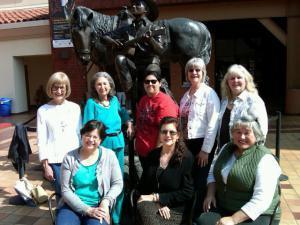 West LA friends: Pam Tartaglio, Penny Sidoli, Mara Purl, Anne Schroeder, Harriet Rochlin, Kay Rol, and Liz Simmons. Bobbi Jean and her friend, western singer Gency Brown joined us, we visited over lunch and then viewed the fabulous western art exhibit. What a privilege to belong to such a wonderful, supportive group! I had a blast in LA!
West LA friends: Pam Tartaglio, Penny Sidoli, Mara Purl, Anne Schroeder, Harriet Rochlin, Kay Rol, and Liz Simmons. Bobbi Jean and her friend, western singer Gency Brown joined us, we visited over lunch and then viewed the fabulous western art exhibit. What a privilege to belong to such a wonderful, supportive group! I had a blast in LA!
From LA, the "Penske Pair" headed to Phoenix, AZ, where we visited with my niece and grandniece, whom we hadn't seen in more than a year. The next leg of the trip found us driving through wind and dust through Tucson and into New Mexico, where we landed in Las Cruces.
Stay tuned to more adventures with the "Penske Pair."








February 22, 2012
Author Interview: Meet Terry Persun
 My guest this week is Terry Persun, a novelist, poet, and marketing strategist. Among the six novels he has published is Sweet Song, which I read recently and give a five-star rating. I thoroughly enjoyed Terry's writing style, use of language and the emotional impact of this story.
My guest this week is Terry Persun, a novelist, poet, and marketing strategist. Among the six novels he has published is Sweet Song, which I read recently and give a five-star rating. I thoroughly enjoyed Terry's writing style, use of language and the emotional impact of this story.
In Sweet Song, a post Civil War novel about Leon, a young mulatto man whose family worked on a Pennsylvania farm, we sense his fears as well as his pleasures when he leaves home and begins to pass as white. This is a story we all own, one that concerns our differences, how others see us, and how we 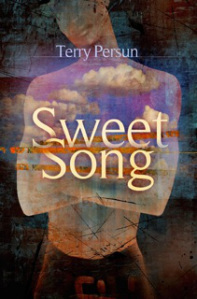 know ourselves to be. Sometimes raw and sometimes tender, the story of Leon's discovery of himself will stay with the reader for a very long time.
know ourselves to be. Sometimes raw and sometimes tender, the story of Leon's discovery of himself will stay with the reader for a very long time.
Terry, you are quite a versatile writer. You've written poetry, coming-of-age novels, sci-fi, and non-fiction. What genre do you prefer? Is one easier than another to write?
Heidi, that's great question, and one that no one has asked before. It makes me think about what I do in a new way. Honestly, I try to write what feels the most urgent to get out at the moment. Having said that, a novel takes a lot more time than a poem or short story, but it still has to have that sense of urgency or I can't write it. To answer the question outright, I'd have to say that I don't prefer any particular genre. I believe that we all have multiple interests and that we should explore them. I mean, I read sci-fi and fantasy, literary, historical fiction, non-fiction of all types, etc., so why not write in those same genres? It's fun to explore them all, and it keeps me interested as well.
Do you think writing in different genres keeps your writing fresh?
Absolutely. It's been said about poets that their job is to make connections where there doesn't appear to be any. If we transfer this same understanding to fiction, it actually supports that we express ourselves in multiple genres. Although some authors can put out novel after novel in the same genre and continue to be fresh, I feel that there are many more who merely repeat themselves. Writing in different genres, for me, keeps me fresh and interested. I hope my readers feel the same way.
When did you become a writer? Is this your background?
I've been writing since I was a little kid, but didn't get serious about it until I was out of engineering school and working in the technology business. All through college I wrote poetry and short stories and began to publish in small magazines, but after college is when I began to work on my first novel. Not doing as well as I thought I would (you only notice how hard it is to write a novel when you read great works and yours can't compare), I started taking classes in writing, reading books on how to write, and getting "reliable" critiques from professors and editors. Eventually, I got my MA in Creative Writing as well. From there, it's just write, write, write.
Did your own writing experiences teach you marketing strategy?
I learned marketing from my day job. I worked as an engineer, then as a magazine editor in the engineering business, then moved into marketing and sales. Just like my writing situation, I didn't know a lot and took classes and studied with other marketing people along the way. If you work hard, study hard, and never give up, you can learn anything.
What inspired you to write Sweet Song ?
A dream. A past life experience. Interest in the subject matter. Something inside me that wouldn't let go until I wrote it. It's difficult to know what came first, but when I started, I knew it was the right book to write at the time.
Do you try to write "character-driven" or "plot-driven" novels and why?
Character driven novels—always. The reason is that I can't even begin a novel until I know who it's about. No matter what idea comes to mind, it doesn't seem to mean much to me until I know how it affects someone's life. I guess I'm always wondering how people get through life, and life's problems, and this is why I focus on the character. I want to know how they think and feel and how they resolve issues. On one level, I believe writing has helped me cope with my own life's ups and downs. For example, I've been through divorce, a child's death, moving, cancer, job loss, you name it…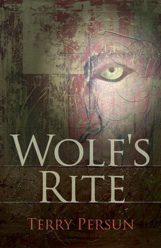
What inspires you to write?
Waking in the morning. Looking at a sunset. Wondering how people live. Watching people diving on the highway, sitting in a restaurant, waiting for their children. I'm always wondering how other people live and what their hopes and dreams are, what do they struggle against. I can drive past a house in the country and wonder what it's like to live in that house, on that country road, for your whole life – no travel, no vacations. I can create a world from that idea…but I need to have a character to follow.
Who are some authors who have inspired you?
Robert Penn Warren (poetry and fiction), James Salter (fiction), William Stafford (poetry), WS Merwin (poetry), Steve Yarbrough (fiction). I could go on and on.
Marketing is difficult for many creatives. What do you advise today's writers who have to "do it all": to wear the creative hat and then put on the salesman's hat?
That's one of the most difficult things for any of us to do. It always helps when you have friends and family who are willing to "talk you up," but that's tough for others as well. So, look yourself in the mirror and say, "It's okay to talk about myself as long as someone asks and I'm honest and brief." That seems to help me. Marketing is something that's necessary, but it doesn't have to be difficult or stressful. Just do what you can. One way I get my material out is to write articles for other magazines, do interviews like this one, and blog when I get the opportunity.
Terry Persun has published six novels, Sweet Song, Cathedral of Dreams, Deception Creek, Giver of Gifts, Wolf's Rite (Winner: Star of Washington Award and ForeWord Magazine Book of the Year f
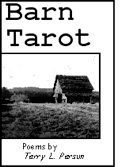 inalist), and The Witness Tree. He has six poetry chapbooks and three book-length poetry collections: Glimpses: Poetry and Art, Every Leaf, and Barn Tarot.. He ha
s also written a non-fiction book, Guidebook for Working With Small Independent Publishers.
inalist), and The Witness Tree. He has six poetry chapbooks and three book-length poetry collections: Glimpses: Poetry and Art, Every Leaf, and Barn Tarot.. He ha
s also written a non-fiction book, Guidebook for Working With Small Independent Publishers.
Terry's books are available at Amazon and Barnes & Noble or from his website.








February 16, 2012
God, Am I Nobody?
Thank you for guest-posting on my blog today, Sheryl.
by Sheryl Young
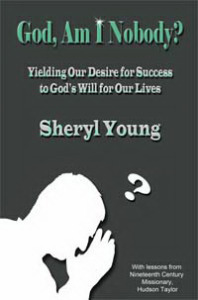 God, Am I Nobody? is subtitled: Yielding Our Desire for Success to God's Will for Our Lives. It is a convenient, carry-anywhere 17-day devotional — or 17 chapters, reading at one's own pace. It deals with how Christians might be conflicted between wanting "success" as the world defines it, or following God's plan for their lives. It addresses two big questions:
God, Am I Nobody? is subtitled: Yielding Our Desire for Success to God's Will for Our Lives. It is a convenient, carry-anywhere 17-day devotional — or 17 chapters, reading at one's own pace. It deals with how Christians might be conflicted between wanting "success" as the world defines it, or following God's plan for their lives. It addresses two big questions:
Why does God use some people in the spotlight, and others in the shadows?
Why does it sometimes feel like we're not being used at all, or we're getting nowhere?!
Each chapter/day includes segments of 19th-century missionary Hudson Taylor's sermonette, A Higher Calling, along with parallel Bible verses and thoughts for everyday application. It's a great little book for Christians burning out on their ministries, stay-at-home moms wondering "is this all there is" or who are often confronted by their working friends on the issues of "success," empty nesters wondering what to do next for God, and even teens and young adults who are planning their careers.
What led you to write God, Am I Nobody?
"I had such a hard time giving all the glory to God when first accepting Jesus as my Savior. Coming out of a theatre background where there were many accolades, I suffered from what I call "attention-itis" – the need for recognition. It took many years before I became conscious of giving all praise to God for my accomplishments…
After writing my first book, I stumbled across Hudson Taylor's piece and considered it to 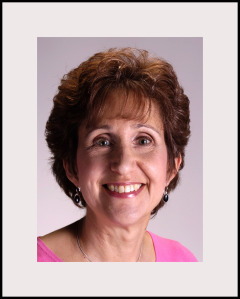 be a divine appointment. It firmly put me in my place regarding pride, and became one of my inspirations for the book. I simply had to write about what God wants for us and from us. I'm astonished at the feedback I've received from other Christians who are struggling with wondering when their '15 minutes of fame' might come, even while trying to do good works for the Lord."
be a divine appointment. It firmly put me in my place regarding pride, and became one of my inspirations for the book. I simply had to write about what God wants for us and from us. I'm astonished at the feedback I've received from other Christians who are struggling with wondering when their '15 minutes of fame' might come, even while trying to do good works for the Lord."
You can see details and purchase the paperback or e-book here at the publisher's page; at Amazon.com in paperback or on Kindle; as an e-book at Smashwords.com, or on Barnes & Noble Nook.
More about Sheryl:
She's known Jesus as her Lord and Savior since 1987, and has been freelance writing from a conservative and biblical perspective since 1997. Her commentaries and feature articles have reached readers through the Tampa Tribune (as a regular contributing editorialist), the St. Pete Times, Florida Baptist Witness Newspaper, Yahoo News online, Christian Post online, VISTA national Sunday School Curriculum and elsewhere. In connection with being a Jewish believer in Jesus, she wrote her previous book, What Every Christian Should Know about the Jewish People, subtitled: Improving the Church's Relationship with God's Original Chosen People (still available at publisher or Amazon.com). She was also a Florida Spokesperson for the traditional values organization Concerned Women for America from 2000 to 2005, representing them on local TV and radio. She and her wonderful husband live in Florida.








February 13, 2012
FANBOYS: How to Use Commas With Conjunctions
My thanks to Cherie for allowing me to share this "trick of the trade" in punctuation.
by Cherie Tucker
We all still remember those little mnemonic devices like "i before e except after c" that helped us over some of the tricky spots in our language. One I was never taught in grade school that would have helped immensely I learned only recently from a fifth-grader: FANBOYS. For, And, Nor, But, Or, Yet, So. This trick for remembering conjunctions, those words that join things, will help you when you ask yourself, do I need a comma here?
If you have written two clauses (groups of words with subjects and verbs) that could stand alone as sentences, but you want to combine them, you join them with one of the FANBOYS. You have created a compound sentence like this one, and compound sentences need the comma. The comma signals to readers that what they just read is finished but that the sentence isn't. It also prevents misreading if there is a line break or a page turn at an awkward spot.
We drove Bill and Sam took the bus.
In this example, the reader might think that we drove both of them, but if there were a comma after Bill, even a reader with no grammatical knowledge would look to see what Sam did.
We drove Bill, and Sam took the bus.
Should you start a sentence with one of the FANBOYS? You may if it isn't expected or overused or in a formal document.
What you must guard against, however, is starting with one of these conjunctions and then putting the comma after it. Writers mistakenly feel inserting a comma there creates a pregnant pause:
Not OK: The backstroke was new to him. Yet, he came in first.
The commas go before the FANBOYS. The only time you want a comma after the conjunction that begins a new sentence is when there is an interruption right after it.
OK: The backstroke was new to him. Yet, to our surprise, he came in first.
There will be times when you don't want a comma with one of the FANBOYS, of course. It's English after all. But when commas serve to join what could be two stand-alone, complete sentences, commas are mandatory. Thanks, Gracie, and thanks to your fifth-grade teacher.
Cherie Tucker, owner of GrammarWorks, has taught writing basics to professionals since 1987, presenting at the PNWA conference. She currently teaches Practical Grammar for Editors at the University of Washington's Editing Certification program and edits as well. GrammarWorks@msn.com








February 5, 2012
Historical Trivia
*************************
Did you know the saying "God willing and the Creek don't rise" was in reference to the Creek Indians and not a body of water? It was written by Benjamin Hawkins in the late 18th century. He was a politician and Indian diplomat. While in the south, Hawkins was requested by the President of the U.S. to return to Washington. In his response, he was said to write, "God willing and the Creek don't rise." Because he capitalized the word "Creek" it is deduced that he was referring to the Creek Indian tribe and not a body of water.
*********************************
In George Washington's days, there were no cameras. One's image was either sculpted or painted. Some paintings of George Washington showed him standing behind a desk with one arm behind his back while others showed both legs and both arms. Prices charged by painters were not based on how many people were to be painted, but by how many limbs were to be painted. Arms and legs are 'limbs,' therefore painting them would cost the buyer more. Hence the expression, 'Okay, but it'll cost you an arm and a leg.' (Artists know hands and arms are more difficult to paint)
******************************
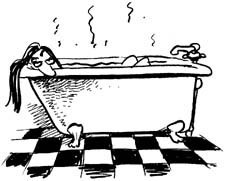 As incredible as it sounds, men and women took baths only twice a year (May and October) Women kept their hair covered, while men shaved their heads (because of lice and bugs) and wore wigs. Wealthy men could afford good wigs made from wool. They couldn't wash the wigs, so to clean them they would carve out a loaf of bread, put the wig in the shell, and bake it for 30 minutes. The heat would make the wig big and fluffy, hence the term 'big wig… ' Today we often use the term 'here comes the Big Wig' because someone appears to be or is powerful and wealthy.
As incredible as it sounds, men and women took baths only twice a year (May and October) Women kept their hair covered, while men shaved their heads (because of lice and bugs) and wore wigs. Wealthy men could afford good wigs made from wool. They couldn't wash the wigs, so to clean them they would carve out a loaf of bread, put the wig in the shell, and bake it for 30 minutes. The heat would make the wig big and fluffy, hence the term 'big wig… ' Today we often use the term 'here comes the Big Wig' because someone appears to be or is powerful and wealthy.
*********************************
In the late 1700′s, many houses consisted of a large room with only one chair. Commonly, a long wide board folded down from the wall, and was used for dining. The 'head of the household' always sat in the chair while everyone else ate sitting on the floor. Occasionally a guest, who was usually a man, would be invited to sit in this chair during a meal.. To sit in the chair meant you were important and in charge. They called the one sitting in the chair the 'chair man.' Today in business, we use the expression or title 'Chairman' or 'Chairman of the Board.'
*********************************
Personal hygiene left much room for improvement.. As a result, many women and men had developed acne scars by adulthood. The women would spread bee's wax over their facial skin to smooth out their complexions. When they were speaking to each other, if a woman began to stare at another woman's face she was told, 'mind your own bee's wax.' Should the woman smile, the wax would crack, hence the term 'crack a smile'. In addition, when they sat too close to the fire, the wax would melt . .. . Therefore, the expression 'losing face.'
*********************************
Ladies wore corsets, which would lace up in the front. A proper and dignified woman, 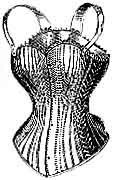 as in 'straight laced' wore a tightly tied lace..
as in 'straight laced' wore a tightly tied lace..
*********************************
Common entertainment included playing cards. However, there was a tax levied when purchasing playing cards but only applicable to the 'Ace of Spades…' To avoid paying the tax, people would purchase 51 cards instead. Yet, since most games require 52 cards, these people were thought to be stupid or dumb because they weren't 'playing with a full deck..'
********************************
Early politicians required feedback from the public to determine what the people considered important. Since there were no telephones, TV's or radios, the politicians sent their assistants to local taverns, pubs, and bars. They were told to 'go sip some Ale and listen to people's conversations and political concerns. Many assistants were dispatched at different times. 'You go sip here' and 'You go sip there.' The two words 'go sip' were eventually combined when referring to the local opinion and, thus we have the term 'gossip.'
**********************************
At local taverns, pubs, and bars, people drank from pint and quart-sized containers. A bar maid's job was to keep an eye on the customers and keep the drinks coming. She had to pay close attention and remember who was drinking in 'pints' and who was drinking in 'quarts,' hence the phrase 'minding your 'P's and Q's'.
**********************************
One more: bet you didn't know this!
In the heyday of sailing ships, all war ships and many freighters carried iron cannons. Those cannons fired round iron cannon balls. It was necessary to keep a good supply near the cannon. However, how to prevent them from rolling about the deck? The best storage method devised was a square-based pyramid with one ball on top, resting on four resting on nine, which rested on sixteen. Thus, a supply of 30 cannon balls could be stacked in a small area right next to the cannon. There was only one problem….how to prevent the bottom layer from sliding or rolling from under the others.
The solution was a metal plate called a 'Monkey' with 16 round indentations. However, if this plate were made of iron, the iron balls would quickly rust to it. The solution to the rusting problem was to make 'Brass Monkeys.' Few landlubbers realize that brass contracts much more and much faster than iron when chilled.. Consequently, when the temperature dropped too far, the brass indentations would shrink so much that the iron cannonballs would come right off the monkey; Thus, it was quite literally, 'Cold enough to freeze the balls off a brass monkey.' (All this time, you thought that was an improper expression, didn't you.)
January 29, 2012
What Was Life Like Before An iPhone?
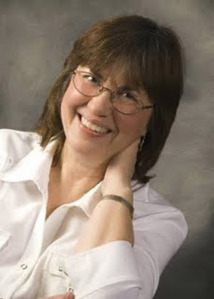 My guest this week is Morgan Mandel, who is on e-tour with her newest novel, Forever Young: Blessing or Curse.
My guest this week is Morgan Mandel, who is on e-tour with her newest novel, Forever Young: Blessing or Curse.
Fresh beginnings turn tragic when Dorrie Donato's husband, Larry, is killed in a hit and run accident a few months after starting a new job at the Life is for Living Institute. Discouraged and desperate after suffering countless setbacks, Dorie accepts an offer by Larry's boss, the famous Angel Man, to be the first to test an experimental pill designed to spin its user back to a desired age and hold there, yet still retain all previous memories. The pill seems too good to be true. Maybe it is.
by Morgan Mandel
I'm very attached to my iPhone. I hardly go anywhere without it. It's super-handy for my lifestyle. I can easily fit it in my pocket or purse , and whip it out to check emails, take or send photos, access Facebook or Twitter, add something on the calculator, listen to music or radio, or actually use it as a telephone. That's just a start, but you get the idea. It's hard to recall what my life was like before this handy gadget.
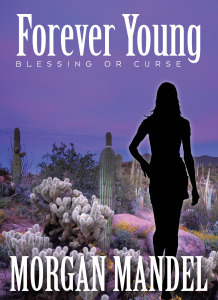 Because an iPhone is such a vital part of my life, it was a natural for me to include one in the plot of Forever Young: Blessing or Curse. In the opening scene, the last words of Dorrie's husband, Larry, involve his iPhone. Believing he refers to all the photos and songs they'd shared together, she mistakes what he's actually trying to convey.
Because an iPhone is such a vital part of my life, it was a natural for me to include one in the plot of Forever Young: Blessing or Curse. In the opening scene, the last words of Dorrie's husband, Larry, involve his iPhone. Believing he refers to all the photos and songs they'd shared together, she mistakes what he's actually trying to convey.
Though her husband's boss, Roman, asks about its whereabouts, Dorrie pretends not to know. She plans to keep the phone for sentimental reasons, despite the fact her husband used it at work and synced it to the computer there. She has no interest in formulas and chemistry, so if anything from his job is on there, the secrets are safe with her.
Her chance discovery of the explosive evidence contained on that iPhone throws her into danger from all sides, as she flees for her freedom and her life.
This paranormal romantic thriller is available at the Blog Book Tour Price on Kindle for $1.99 – http://tinyurl.com/6tsntn6
See entire list of other available electronic venues at http://morgansbooklinks.blogspot.com
Thanks for inviting me over Heidi, and letting me share about my iPhone and my paranormal romantic thriller, Forever Young: Blessing or Curse.
Thank you, Morgan, for stopping by on your tour!
Maybe the readers here would like to mention if they have an iPhone or smartphone, and if they're also as dependent on theirs as I am on mine.
Morgan Mandel is a former freelancer for the Daily Herald newspaper, prior president of Chicago-North RWA, prior Library Liaison for Midwest MWA, and belongs to Sisters in Crime and EPIC. She enjoys writing thrillers, mysteries, romances and also enjoys combining them. Her latest paranormal romantic thriller is Forever Young: Blessing or Curse, Book One of the Always Young Series, available on Kindle and Smashwords. Other novels by Morgan Mandel include the romantic suspense, Killer Career, the mystery, Two Wrongs, and the romantic comedy, Girl of My Dreams. Morgan is now working on Book Two of the Always Young Seres, called Blessing or Curse: A Forever Young Anthology, where readers will learn what happens to others who have taken the Forever Young pill. One more book will follow bringing back the original heroine to close out the series.
Blog: http://morganmandel.blogspot.com
Website: http://www.morganmandel.com








January 23, 2012
Meet Judy Kirscht and Her Debut Novel, Nowhere Else to Go
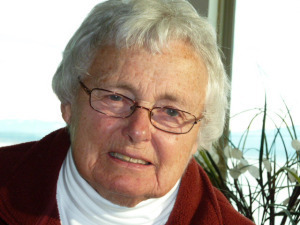 My guest this week is Judy Kirscht, Past President of the Skagit Valley Writers League. Her first novel, Nowhere Else To Go, has just debuted.
My guest this week is Judy Kirscht, Past President of the Skagit Valley Writers League. Her first novel, Nowhere Else To Go, has just debuted.
I recommend this book as a wonderfully engaging coming-of-age story, showing change and growth in her characters, their small town, and American society during the 1960s era of racial unrest. Crossing the bridge from the "poor" side of town to the integrated school on the other side is a powerful metaphor for life, no matter our station in life or skin color.
Synopsis: A quiet Midwestern college town is caught up in the social and political upheavals of the 1960s. Racial tension comes alive in the schools and tears lives apart. An earlier version of this novel, entitled The Delta, won an Avery Hopwood Award from the University of Michigan.
Judy, would you share the story of how this book came about? Where did the idea come from?
During the Sixties and early seventies, when campus protests, riots, and civil rights marches were in full swing, I was raising my family in Ann Arbor. My husband and I had always been involved in politics, and in fact, he was a city councilman during this time, which made us a target. The story itself and its characters are purely fiction but the feeling of being pulled apart—and seeing my children pulled apart– by forces polarizing the nation gave birth to the novel.
Did this novel take a lot of research?
Not really, oddly enough. I knew from my own past the culture of the various 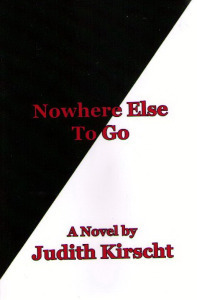 communities involved in the book. I'd worked as a caseworker in black inner-city Chicago along with many black colleagues, been a part of academic communities all my life, and lived in a neighborhood like the "Delta." I chose 1968 as the time setting for the novel because, with the assassination of King and Robert Kennedy, it marks the depths of national turmoil—a time that, for me, didn't need much research. It was memorable.
communities involved in the book. I'd worked as a caseworker in black inner-city Chicago along with many black colleagues, been a part of academic communities all my life, and lived in a neighborhood like the "Delta." I chose 1968 as the time setting for the novel because, with the assassination of King and Robert Kennedy, it marks the depths of national turmoil—a time that, for me, didn't need much research. It was memorable.
Tell us about your background. Were you a college professor? How did this help you in your writing?
Well, let's start with the fact that I wasn't a professor. I was a non-tenured lecturer, teaching writing. That made me one of the fringe faculty many professors felt to be unnecessary. If you can't write you shouldn't be in college. I was, however, raised in academia and my husband was a professor, though he never felt at home in that culture and was happiest in the basement, working with wood. All of this certainly resulted in a feel for those alienated from their home culture—the sort who ended up in "the delta." My own experience as a teacher was at the college level, so I don't know how much that contributed, except that I was well aware of school politics and educational dogmatism. Finally, I was always active in politics. It's a longstanding love, and so we lived very close to the fire in those days.
What other writing have you had published?
In that long ago time when I was a grad student at the University of Michigan—actually the time when this novel was first conceived—I published one short story. Then, for years I published teacherly non-fiction on academic writing, ending with the publication, with a colleague, of a textbook on writing in the various fields of study. Once I retired from teaching, I turned to fiction in earnest and have published two excerpts from another novel, and two more short stories. I also published the essay that won another Hopwood Award back when I was a U of M student. It's strange and somehow gratifying that the two works that won awards thirty-five years ago have now seen the light of day.
What project are you working on currently?
Projects, and too many. I've just finished the first draft of a novel titled The Camera's Eye, which sprang from a short story, and while that is cooling I've been revising another, earlier novel. I hope to have that finished in a couple of months. In addition, I'm currently marketing a novel I finished soon after retirement and another is waiting on a back burner for revision.
Who/what motivates you to write?
I don't know, honestly. My mother said I wrote wonderful stories as a child. I don't remember that. I simply woke up one morning thinking I was going to do something else with my life besides raising children. I was going to write. So I went into the room at the UM where creative writers hung out—the Hopwood Room–and made an appointment to see Robert Haugh, the professor who resided there. Then, as I awaited the day, it occurred to me he surely would want to see some writing! I had none. So I sat down that afternoon and wrote. When I showed him the piece, he said I was a writer. That was it. One of those moments that change your life. He offered to work with me a special student (not enrolled in a program) and I began to write. I wrote two novels under his tutelage, Nowhere Else to Go and another. Fifteen years later, that first piece I'd shown him won the Hopwood essay award.
What authors have inspired you?
My first love was short stories—Flannery O'Conner, Eudora Welty, Dorothy Parker. An Acquaintance recently reminded me of Saki, who I haven't read in years but loved. As for novelists, Ursula Hegi, Margaret Attwood, Amy Tan, and Nadine Gordimer are favorites, along with some classics like Tolstoy and Steinbeck. Kaled Hossein's Kite Runner and Sara Gruen's Water for Elephants are recent additions to that list.
What audience are you targeting?
That's a tough one. Those who like a good read that takes you deep. My critique group says I write literary fiction, but I aim at a mainstream audience. So I guess I'm aiming at something called literary/mainstream or literary/commercial. I believe—or hope—my writing is accessible to anyone who wants a good story.
What advice would you give to aspiring writers?
Write. Don't wait for inspiration. If I hadn't had to show Robert Haugh a piece of writing that afternoon, I never would have written a word. And I hadn't a clue what I was going to say when I sat down with that yellow pad on my knees. That sounds strange, and it is, but many if not most authors with confirm that ideas don't come until your finger are at the keyboard. Then, don't fall victim to the "I only write for myself" defense. Like all defenses, it is born of fear. Face up and share. That's what writing's about—sharing our view of the human condition because in that sharing we deepen our bonds. A critique group is the first and best motivator to love and stay with the craft.
Judy's book is available from Florida Academic Press (www.floridaacademicpress.com), Amazon, or local independent Washington bookstores (Snow Goose in Stanwood, Tattered Page in Mount Vernon, Watermark in Anacortes, and the Next Chapter in La Conner, WA).








January 22, 2012
The Champions Creed
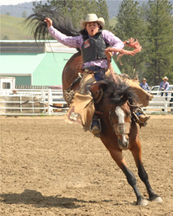 This poem is courtesy of Kaila Mussel, the first woman to qualify to compete with men in the PRCA since 1941. She also is the amazing bronc rider in the Reba McEntire video. See an article about her by Shirley Morris, author of the documentary Oh! You Cowgirl
This poem is courtesy of Kaila Mussel, the first woman to qualify to compete with men in the PRCA since 1941. She also is the amazing bronc rider in the Reba McEntire video. See an article about her by Shirley Morris, author of the documentary Oh! You CowgirlThe Champions Creed
If you think you are beaten, you are;
If you think you dare not, you don't;
If you'd like to win but
think you can't
It's almost a cinch you won't.
If you think you'll lose, you're lost,
For out in the world we find,
Success begins with the fellow's will,
Its all in the state of the mind.
If you think you're outclassed,
you are;
You've got to think to rise.
you've got to be sure of
yourself before
You can ever win a prize.
Life's battles don't always go
To the stronger for faster man;
But sooner or later the man who wins
Is the one who thinks he can.









